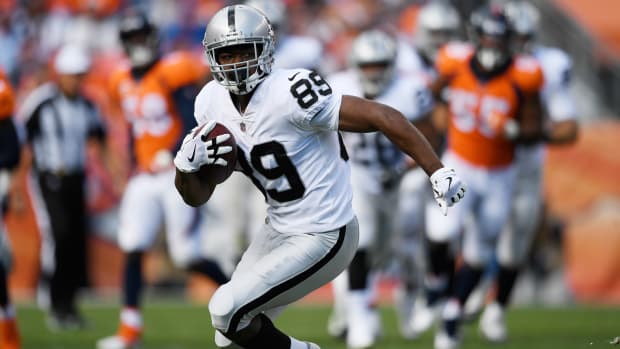Cup champ Spithill takes offshore foiling to next level
SAN DIEGO (AP) Always eager for a challenge, two-time America's Cup champion skipper Jimmy Spithill and his crew of five on a high-performance, 46-foot catamaran hooked into a strong breeze off New York and headed toward Bermuda, hoping to ride above the waves on hydrofoils for all 662 nautical miles.
The weather turned nasty about halfway there, forcing them at one point to drop their sails and switch from performance mode to survival mode.
Team Falcon made it to Bermuda in one piece, leaving Spithill excited about the future of offshore foiling while respecting Mother Nature.
''It got pretty bad,'' the Australian said in a phone interview from Japan, where he'll lead Oracle Team USA in the final stop of the America's Cup World Series this weekend. ''The first 24 hours were awesome. We put down some awesome miles and got to the Gulf Stream pretty quickly. Then it started to turn for the worse.''
Waves that had been 6 1/2 feet grew as big as 20 to 25 feet as the wind rose from 20 knots up to 40 to 45 knots.
''Anytime you have to go offshore, you have to be prepared for the worst,'' Spithill said. ''It's like mountain climbing. Anyone who goes up Everest or any other decent mountain, you have to be prepared for the weather to change and you have to have a plan. We were always prepared for the worst. In that situation you usually learn something about yourself and the team around you. It was impressive to see how everyone responded and got through it.''
The boat sailed at more than 30 knots a few times during the 66-hour trip, Spithill said.
Down to bare poles at one point in strong wind, the cat was still going 20 knots down waves. ''We had a hard time slowing the boat up,'' Spithill said. ''That's what you've got to be able to face when you're on the ocean, especially the Gulf Stream, which can be pretty notorious water. It was pretty crazy.
''It was some of the best sailing I've done of my life offshore. It proves this is the next step in the offshore world,'' Spithill said.
The trip was the idea of Shannon Falcone of Antigua, a former Oracle Team USA crewmember, and backed by Red Bull, which sponsors both OTUSA and the Red Bull Youth America's Cup. The F4, built in the Netherlands, is the first foiling catamaran specifically built for the open ocean.
Foiling has become the rage in sailing. While the concept has been around for years, it went mainstream during the 2013 America's Cup on San Francisco Bay in a duel between 72-foot catamarans. It's continued to develop leading up to the 2017 America's Cup, which will be contested in 50-foot foiling cats in Bermuda.
When the America's Cup catamarans reach a certain speed, they rise up on foils, lifting the hulls out of the water and allowing faster speeds.
''It's just pure performance,'' said Spithill, who steered Oracle's giant trimaran to victory in the 2010 America's Cup and then helped rally the American-backed team to victory over Emirates Team New Zealand in 2013. ''Once you can sort of get that drag gone and get that boat out of the water, it's like a turbo boost.''
One challenge of offshore foiling will be at night. Spithill said foiling requires the crew to anticipate and look around, and the crew had to rely only on instruments during three moonless nights.
While Spithill said he got ''a real test, physically and mentally,'' from the trip, the worst offshore conditions he'd been in were in the 1998 Sydney to Hobart race, when six sailors died and five yachts sank during a fierce storm.
Spithill also was at the wheel of Oracle's 72-foot catamaran when it capsized in rough conditions on San Francisco Bay in October 2012.
Joining Spithill and Falcone on Team Falcon were Oracle Team USA's Rome Kirby of Newport, Rhode Island; Tommy Loughborough of Singapore; Olympic sailor Cy Thompson of the Virgin Islands and Emily Nagel, a member of Team Bermuda in the Red Bull Youth America's Cup.
Matt Knighton, who won the Onboard Reporter Award for the 2014-15 Volvo Ocean Race, was the onboard cameraman, even using a drone to capture video footage during daylight hours.
The voyage proved that foiling is the next step in offshore performance, Spithill said.
''But there's a limit. No matter what, Mother Nature will decide at what level you will operate. And Mother Nature made that decision for us.''
---
Follow Bernie Wilson on Twitter at http://twitter.com/berniewilson




